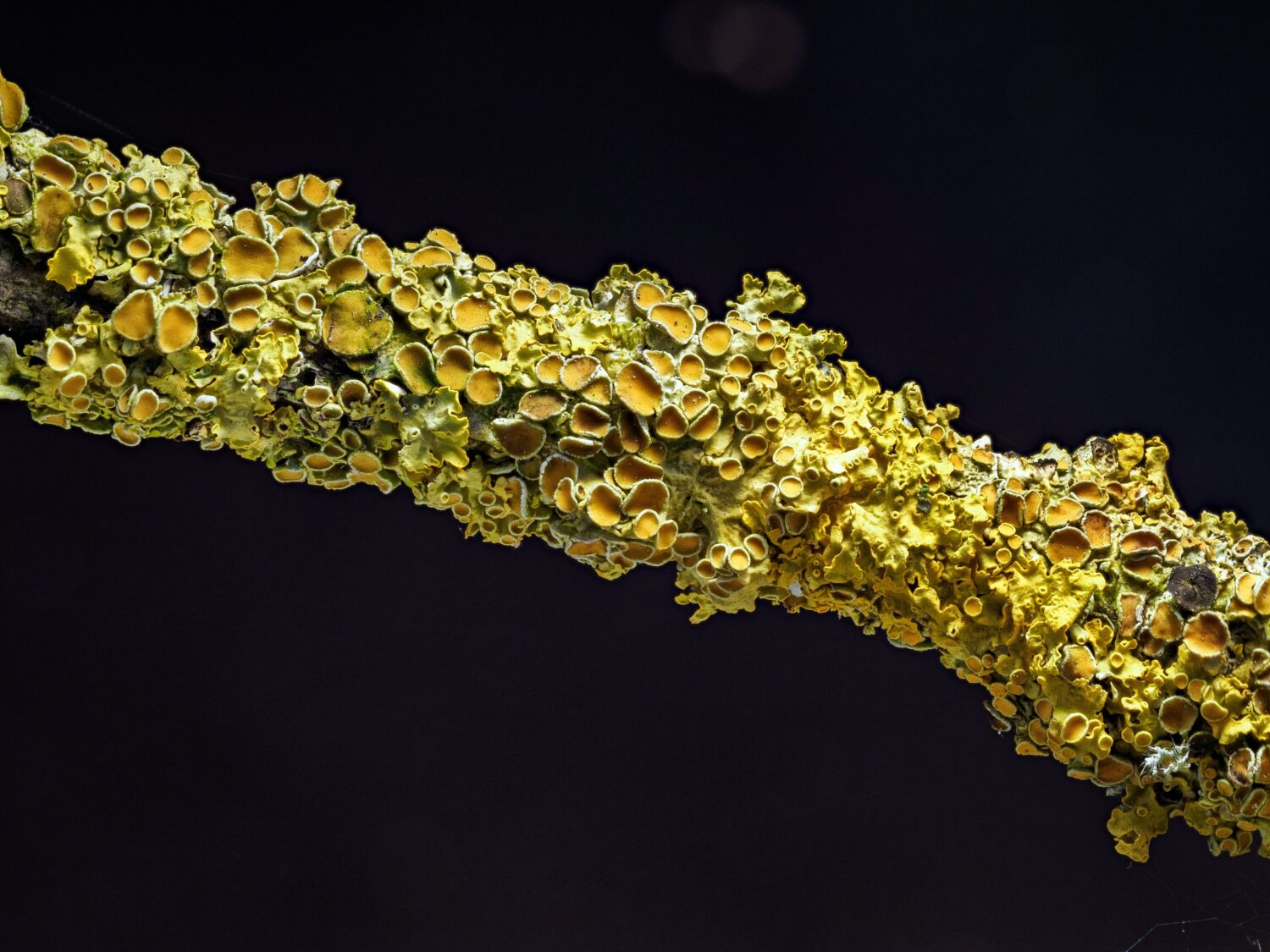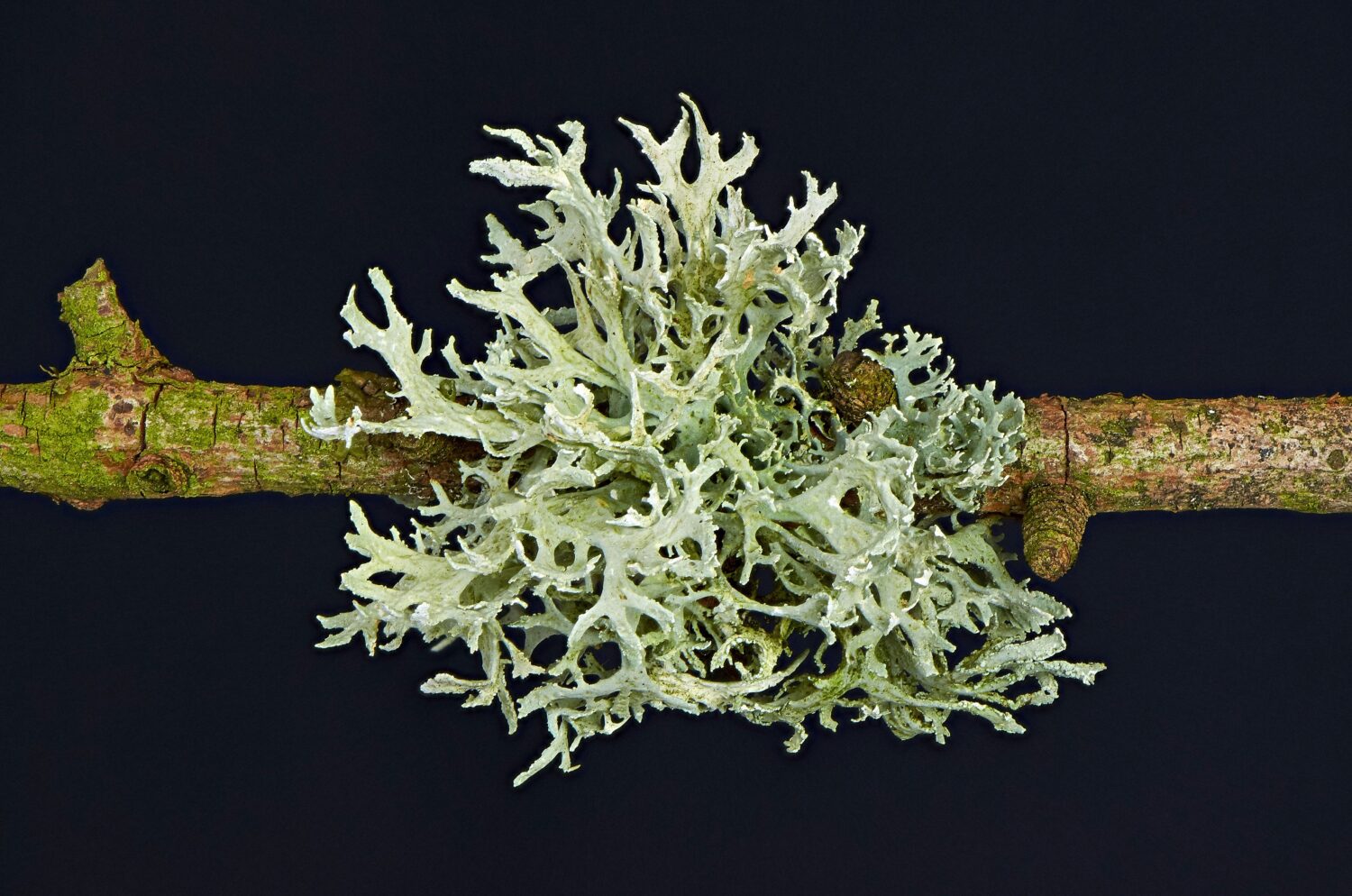A study of lichen communities around Corbridge paints a stark picture of the impacts of air pollution on ecosystems in the North East. Following her recent 1829 talk, Alex Reynolds highlights what can be learn from them.
What are Lichens?
Lichens are miniature plants found growing on a variety of surfaces such as tree bark and dry stone walls. Sometimes underestimated due to their diminutive size, camouflage palette, and ability to hide in plain sight, they provide a plethora of benefits for wildlife, and for us.
Although classified as plants, lichens exist as a mutually beneficial partnership between fungi and algae (or sometimes bacteria), and live as one combined organism. However, unlike traditional plants, lichens don’t have roots and so are dependent on nutrients from the air. This knowledge is the key to understanding why lichens are so important to us as ‘bio-indicators’. Lichens are known to respond reliably to air pollution levels, so much so that national maps have been created in the past using the sensitivities of lichens to show the spread of air pollution.
The Project
This reliability was of benefit to my master’s degree project. The project focused on tree lichens in Corbridge and the surrounding area to investigate the factors which could affect lichen distribution. The project found that harmful nitrogen particles which accumulated in the bark of trees in the area came from vehicle exhaust fumes. This form of air pollution also builds up inside the lichen tissues and was the main negative effect on lichens in the area. As one might expect this was most evident near the major roads (A68 and A69) where only the most tolerant lichen species survived, but the effects of air pollution were recorded several kilometres away from the main roads, especially following the direction of the south-westerly prevailing wind.


The legacy of the Tyne Valley’s industrial heritage with different sources of pollution over the years may also have had a long-term impact on the diversity of species in the area. Lichens which recolonise a previously polluted area may not always return to the same habitat, and not necessarily in the order they disappeared – just some of the mysteries which still need to be studied. Also, both confusing and fascinating in equal measure is that lichens show a time-lag in their response to air pollution, so the lichens we see today are still responding to the atmospheric conditions of several years ago – meaning the effects of climate change we see elsewhere in nature may not manifest in lichens for some time.
This project has highlighted the negative effects of human activity on our doorstep, in an area of picturesque beauty and dynamic wildlife – such is the reach of air pollution. I hope that others can use this data to measure any future change using the reliable and humble lichen to tell them all they need to know.
Now is the perfect time to spot lichens, as bare trees reveal an abundance of them on their branches. You can use this handy lichen guide to find out more.